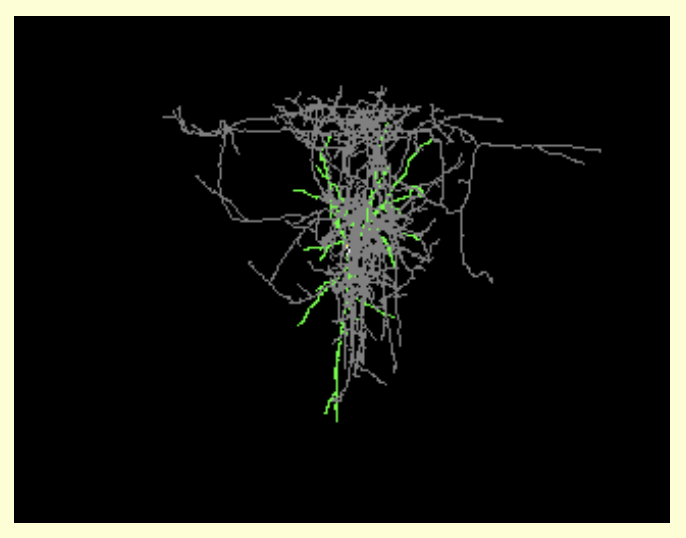X
X
Snippet view
Table view
7 Results - per page
| Name |
Description |
Preferred ID |
Type |
ID |
Score | ||
|---|---|---|---|---|---|---|---|
| 5HT-dro2B receptor | MESH:M0259523 | term | ILX:0538385 | 288.11914 | |||
| Serotonergic system | any molecule, protein, cell, tissue or organ that is related to serotonin. | UBERON:0025593 | term | ILX:0110555 | 10.865299 | Molecular system, Body system, Anatomical entity, Independent continuant, Continuant | Serotonin system, 5HT system, serotonergic system, 5-ht system |
| 5-HT2C receptor | NIFEXT:7414 | term | ILX:0100040 | 8.783618 | Serotonin G-protein coupled receptor, G-protein coupled receptor, Protein, Molecular entity, Material entity, Independent continuant, Continuant | 5-HT2C, 5- HT2C, 5-HT-2C, 5-HTR2C, 5HT-1C, Serotonin receptor 2C, 5-hydroxytryptamine 2C receptor | |
| Nafronyl | A drug used in the management of peripheral and cerebral vascular disorders. It is claimed to enhance cellular oxidative capacity and to be a spasmolytic. (From Martindale, The Extra Pharmacopoeia, 30th ed, p1310) It may also be an antagonist at 5HT-2 serotonin receptors. | MESH:M0014423 | term | ILX:0485590 | 5.7121763 | ||
| Ziprasidone | Ziprasidone (marketed as Geodon, Zeldox) was the fifth atypical antipsychotic to gain FDA approval (February 2001). Ziprasidone is Food and Drug Administration (FDA) approved for the treatment of schizophrenia, and the intramuscular injection form of ziprasidone is approved for acute agitation in schizophrenic patients. Ziprasidone has also received approval for acute treatment of mania associated with bipolar disorder. (Wikipedia) Pharmacology: Ziprasidone is a psychotropic agent belonging to the chemical class of benzisoxazole derivatives and is indicated for the treatment of schizophrenia. Ziprasidone is a selective monoaminergic antagonist with high affinity for the serotonin Type 2 (5HT2), dopamine Type 2 (D2), 1 and 2 adrenergic, and H1 histaminergic receptors. Ziprasidone acts as an antagonist at other receptors, but with lower potency. Antagonism at receptors other than dopamine and 5HT2 with similar receptor affinities may explain some of the other therapeutic and side effects of Ziprasidone. Ziprasidone's antagonism of muscarinic M1-5 receptors may explain its anticholinergic effects. Ziprasidone's antagonism of histamine H1 receptors may explain the somnolence observed with this drug. Ziprasidone's antagonism of adrenergic a1 receptors may explain the orthostatic hypotension observed with this drug. Ziprasidone functions as an antagonist at the Dopamine D2 , 5HT-2A , and 5HT-1D receptors, and as an agonist at the 5HT-1A receptor. Ziprasidone also inhibits synaptic reuptake of serotonin and norepinephrine. Mechanism of action: The mechanism of action of Ziprasidone, as with other drugs used to treat schizophrenia, is unknown. Ziprasidone exhibited high in vitro binding affinity for the dopamine D2 and D3, the serotonin 5HT2A, 5HT2C, 5HT1A, 5HT1D and alpha 1-adrenergic receptors, and moderate affinity for the histamine H1 receptor. However, it has been proposed that the drug's therapeutic activity in schizophrenia is mediated through a combination of dopamine Type 2 (D2) and serotonin Type 2 (5HT2) receptor antagonism. Drug type: Approved. Small Molecule. Drug category: Antipsychotic Agents. Antipsychotics. Dopamine Antagonists. Serotonin Antagonists | ILX:0112730 | term | ILX:0112730 | 2.9328566 | Molecular entity, Material entity, Independent continuant, Continuant | Ziprasidone hydrochloride, Ziprasidone mesylate trihydrate, Geodon |
| Fluoxetine | The first highly specific serotonin uptake inhibitor. It is used as an antidepressant and often has a more acceptable side-effects profile than traditional antidepressants. (PubChem) Pharmacology: Fluoxetine, an antidepressant agent belonging to the selective serotonin reuptake inhibitors (SSRIs), is used to treat depression, bulimia nervosa, premenstrual dysphoric disorder, panic disorder and post-traumatic stress. According to the amines hypothesis, a functional decrease in the activity of amines, such as serotonin and norepinephrine, would result in depression; a functional increase of the activity of these amines would result in mood elevation. Fluoxetine's effects are thought to be associated with the inhibition of 5HT receptor, which leads to an increase of serotonin level. Mechanism of action: Metabolized to norfluoxetine, fluoxetine is a selective serotonin-reuptake inhibitor (SSRI), it blocks the reuptake of serotonin at the serotonin reuptake pump of the neuronal membrane, enhancing the actions of serotonin on 5HT1A autoreceptors. SSRIs bind with significantly less affinity to histamine, acetylcholine, and norepinephrine receptors than tricyclic antidepressant drugs. Drug type: Approved. Small Molecule. Drug category: Antidepressants, Second-Generation. Antidepressive Agents, Second-Generation. Selective Serotonin Reuptake Inhibitors (SSRIs). Serotonin Uptake Inhibitors | CHEBI:5118 | term | ILX:0104326 | 1.7871846 | Molecular entity, Material entity, Independent continuant, Continuant | Fluoxetina (INN-Spanish), Fluoxetina (Spanish), Fluoxetine Hcl, Fluoxetine Hydrochloride, Fluoxetinum (INN-Latin), Adofen, Animex-On, Deprex, Eufor, Fluctin, Fluoxeren, Fluval, Fontex, Foxetin, Portal, Prozac, Prozac Weekly, Pulvules, Reneuron |
| Granisetron | A serotonin receptor (5HT-3 selective) antagonist that has been used as an antiemetic for cancer chemotherapy patients. (PubChem) Pharmacology: Not Available Mechanism of action: Granisetron is a potent, selective antagonist of 5-hydroxytryptamine (serotonin) subtype 3 (5-HT 3) receptors. 5-HT 3 receptors are present peripherally on vagal nerve terminals and centrally in the area postrema of the brain. Cytotoxic drugs and radiation damage gastrointestinal mucosa, causing the release of serotonin from the enterochromaffin cells of the gastrointestinal tract. Stimulation of 5-HT 3 receptors causes transmission of sensory signals to the vomiting center via vagal afferent fibers to induce vomiting. By binding to 5-HT 3 receptors, granisetron blocks vomiting mediated by serotonin release. Granisetron has little or no affinity for other serotonin receptors, including 5-HT 1 , 5-HT 1A , 5-HT 1B/C , or 5-HT 2 ; for alpha 1 -, alpha 2 -, or beta-adrenoreceptors; for dopamine D 2 receptors; for histamine H 1 receptors; for benzodiazepine receptors; for picrotoxin receptors; or for opioid receptors. In most human studies, granisetron has had little effect on blood pressure, heart rate, or electrocardiogram (ECG). Drug type: Approved. Investigational. Small Molecule. Drug category: Antiemetics. Serotonin Antagonists | ILX:0104737 | term | ILX:0104737 | 1.7359581 | Molecular entity, Material entity, Independent continuant, Continuant | APF530, Granisetron HCl, Granisetron base, Granisetron hydrochloride, Granisetronum (INN-Latin) |
X






